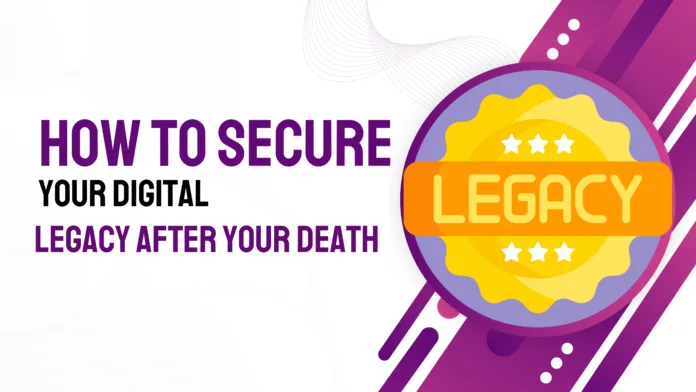In today’s hyper-connected world, our digital footprint is bigger than ever. From social media profiles to emails, cloud storage, online banking, and digital photos — our lives are stored across countless platforms. But have you ever paused to wonder: what happens to your data after you die? This is where the concept of your digital legacy after death becomes extremely important.
We plan our finances, insurance, and health care for the end of life — but very few people make any plans for their digital assets. Whether you’re an everyday user or a tech-savvy professional, understanding and managing your digital legacy is now an essential part of life planning.
Why Your Digital Legacy Matters
Your digital legacy after death includes everything you leave behind online — intentionally or unintentionally. That means:
Social media accounts like Facebook, Instagram, and Twitter
Cloud storage (Google Drive, iCloud, Dropbox)
Online banking or investment platforms
Subscriptions (Netflix, Spotify, etc.)
Personal websites or blogs
Email accounts
E-commerce accounts (Amazon, eBay)
When a person passes away, these accounts don’t just disappear. Without proper planning, your digital information could become inaccessible or — worse — vulnerable to hacking or identity theft.
What Happens to Your Accounts?
Each platform handles deceased users’ data differently. Some allow for memorialization, others provide options to delete the account permanently, and many require legal documentation to access a loved one’s account. Let’s look at a few examples:
Facebook offers a “Memorialization” option. A legacy contact can manage the memorialized profile.
Google provides an “Inactive Account Manager” where users can set up rules for data sharing after prolonged inactivity.
Apple now supports a “Legacy Contact” feature, which grants access to certain digital assets upon death.
However, if you haven’t made these settings before passing, it can be incredibly hard for loved ones to manage your digital presence.
Legal Challenges with Digital Data
Unlike physical possessions, digital assets after death aren’t always clearly addressed in law. Many terms of service agreements are not designed with death in mind. As a result, ownership rights to digital content can be ambiguous.
In some countries, digital data is treated as personal property. In others, it’s controlled solely by the platform hosting it. These legal gray areas often leave families feeling frustrated and helpless when trying to access a deceased person’s online accounts.
Planning Your Digital Legacy
Here are steps you can take today to ensure your digital legacy after death is managed properly:
1. Take Inventory of Your Digital Assets
List your important digital accounts, from social media to cloud storage to banking. Include usernames and types of data stored.
2. Set Up Legacy Contacts or Access Permissions
Platforms like Google, Facebook, and Apple now allow users to assign trusted individuals to manage their accounts after death.
3. Use a Password Manager
Store all your login credentials in a secure password manager, and leave instructions on how to access it.
4. Create a Digital Will
This can be a part of your legal will or a separate document outlining how your digital assets should be handled. Name someone you trust as your digital executor.
5. Keep Your Instructions Up to Date
Technology changes fast. Update your digital asset inventory regularly to reflect new accounts or services you’ve started using.
Emotional and Ethical Considerations
There’s also an emotional side to the digital afterlife. Photos, videos, and messages can be treasured memories for families. Some may wish to preserve these, while others prefer to have them deleted for privacy.
Also, think about your online persona. Do you want your social media accounts to remain visible? Or do you prefer a digital disappearance?
Making these choices while you’re alive helps remove the burden from your family and ensures your wishes are respected.
Cybersecurity and Posthumous Identity Theft
A neglected digital presence can become a target for cybercriminals. Hackers sometimes exploit dormant accounts of the deceased to commit identity theft or fraud. This risk underscores the need to handle your digital legacy after death as carefully as you would your physical assets.
The Future of Digital Afterlife Services
As awareness grows, more companies are offering digital afterlife management services. These range from online vaults that store your credentials, to AI-based platforms that can send scheduled messages or videos after death.
While some may find these futuristic or even unsettling, they reflect our growing need to control what happens to our digital selves after we’re gone.
Final Thoughts
Your digital legacy after death is just as real and valuable as your physical legacy. Taking steps now to plan and protect your online identity can save your loved ones stress, prevent your data from falling into the wrong hands, and ensure your memory is honored in the way you choose.
In a digital world, death doesn’t mean disappearing. It means deciding what you want to leave behind… and who you trust to manage it.
